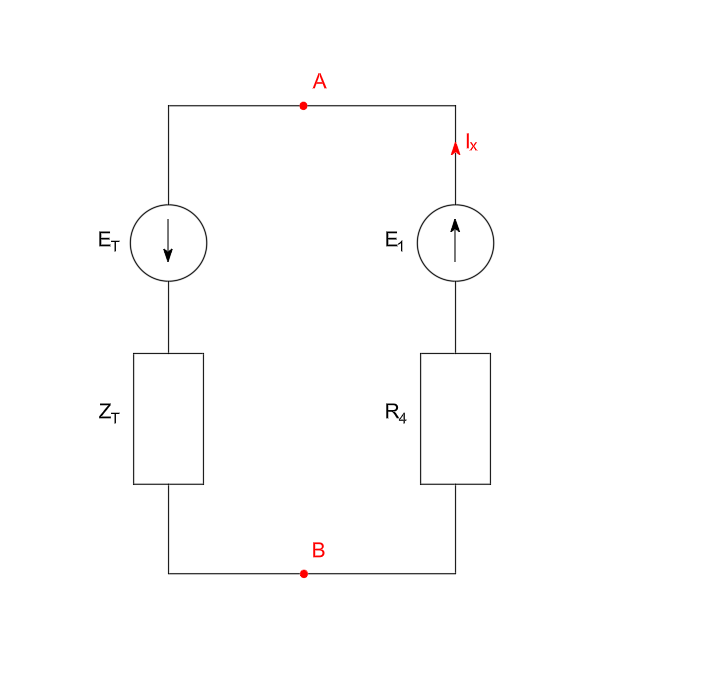Circuit theory
Thevenin's theorem
- What is the Thevenin method? - definition and application
- Steps of the Thevenin method - procedure algorithm
- Video - explanation of the method
- Examples of application of the method
- Example 1 - calculating current in a branch
What is the Thevenin method?
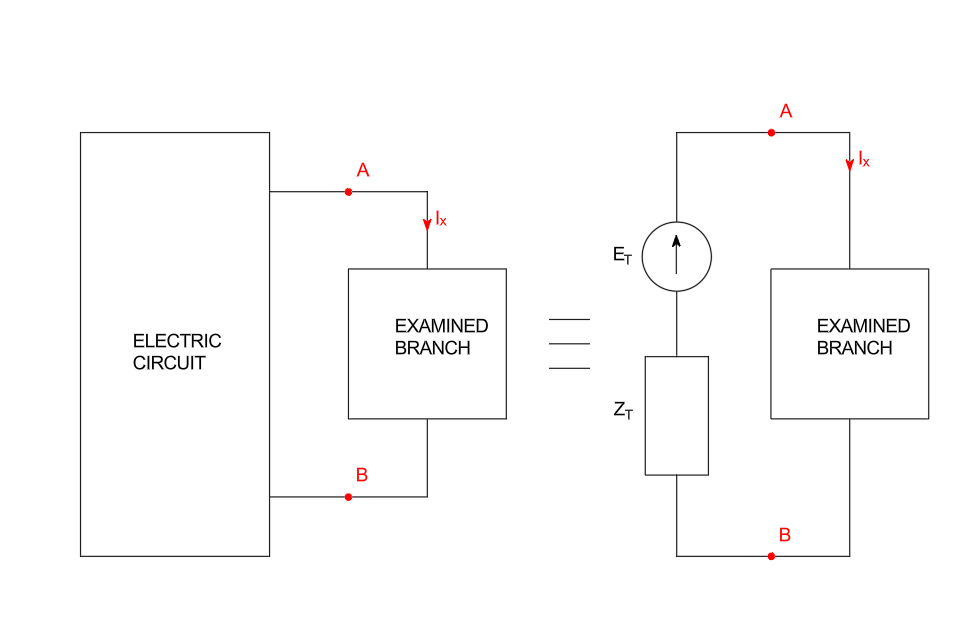
Thevenin's theorem, also known as the theorem of the equivalent voltage source, sounds quite complicated at first, but its application will prove to be very simple when we see it in an example.
We will not delve too deeply into the theory behind this theorem; in a significant simplification, it states that:
A stationary, linear, and focused electrical circuit can be replaced by a circuit consisting of an ideal voltage source (Thevenin source) and an impedance (resistor in direct current circuits).
Importantly, this method is used to calculate the current in a single branch of the circuit, so it is great for verifying calculations made by other methods and also simplifies many more advanced issues.
Steps of the Thevenin method
Steps of the method:
- We disconnect the branch from the circuit for which we want to calculate the current
- For the rest of the circuit, we calculate:
- Thevenin voltage
- Equivalent impedance (resistance) (compare -> equivalent resistance)
- We connect these elements to the examined branch and calculate the current in that branch
Video - explanation of the method
Example 1
Content
Using the Thevenin method, determine the current \(I_x\)
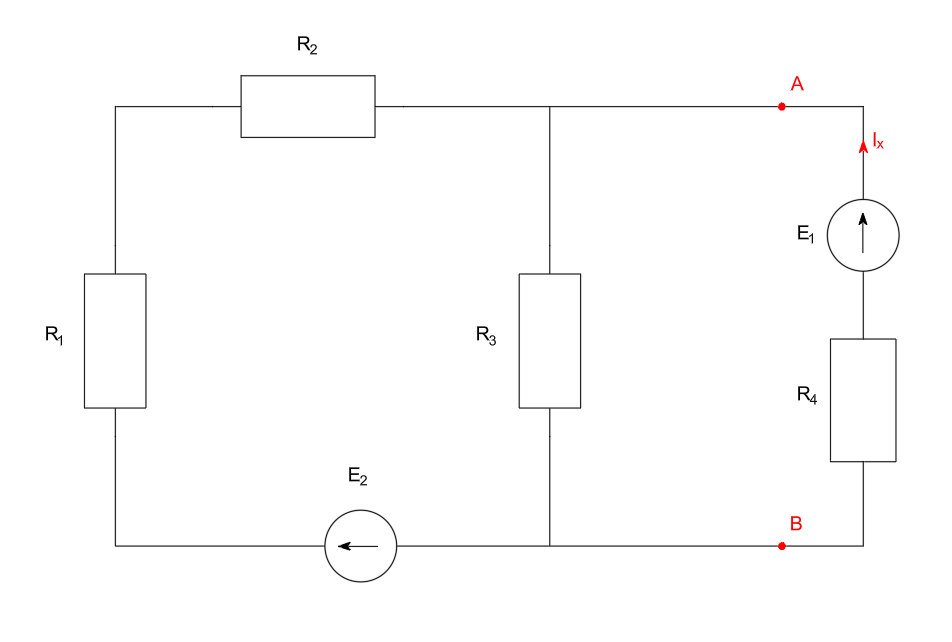
Data: \(R_1=10 \Omega, R_2=20 \Omega, R_3=30 \Omega, R_4=20 \Omega, E_1=130 V, E_2=120 V\)
Solution
Step 1 - We disconnect the branch from the circuit for which we want to calculate the current
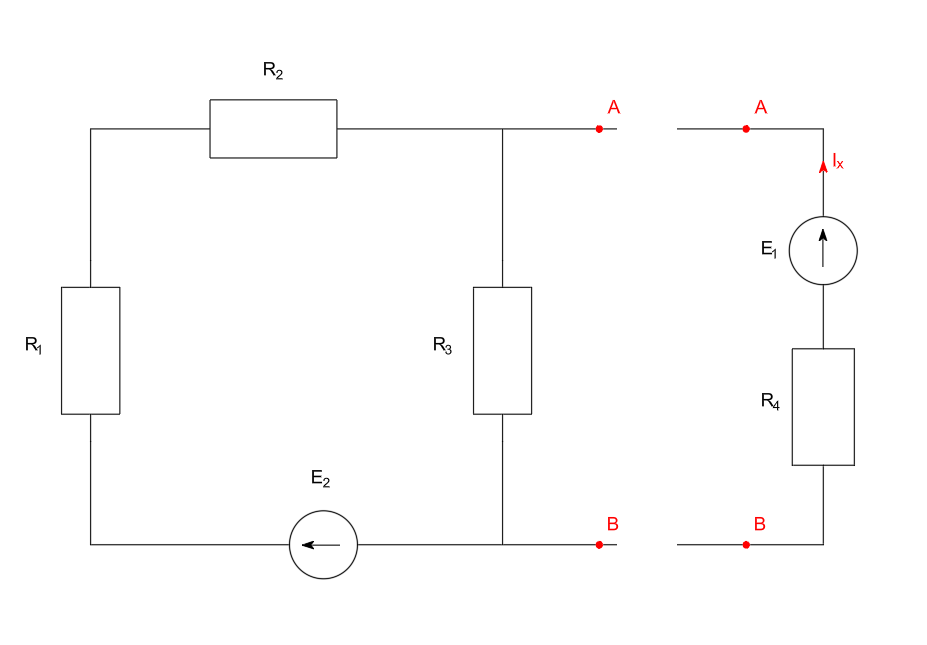
Step 2 - For the rest of the circuit, we calculate the Thevenin voltage
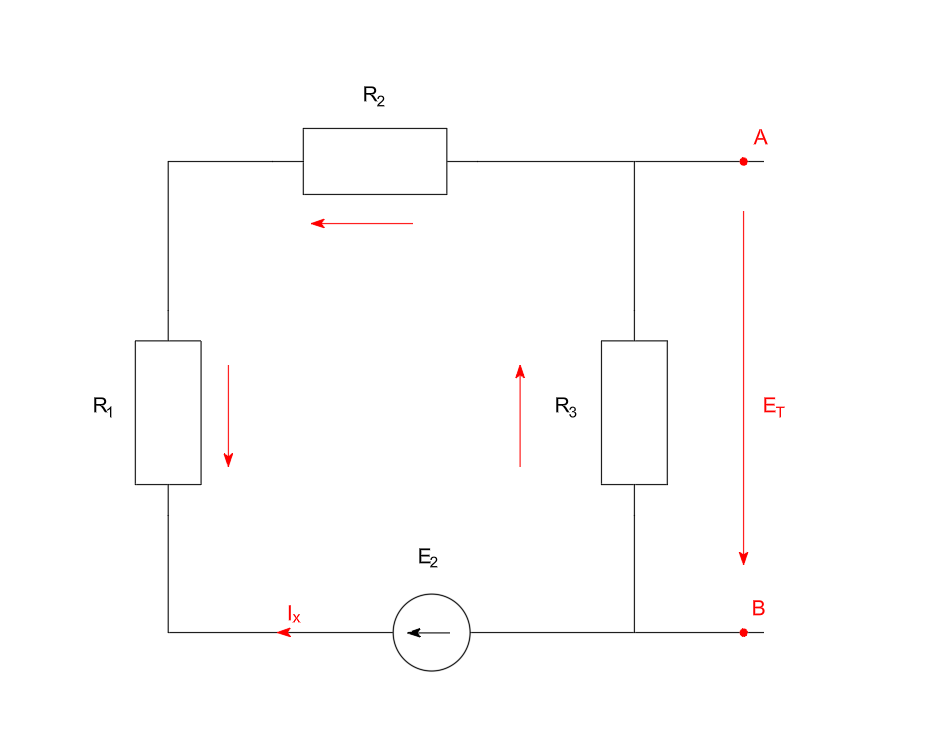
Step 3 - For the rest of the circuit, we calculate the equivalent impedance (resistance)
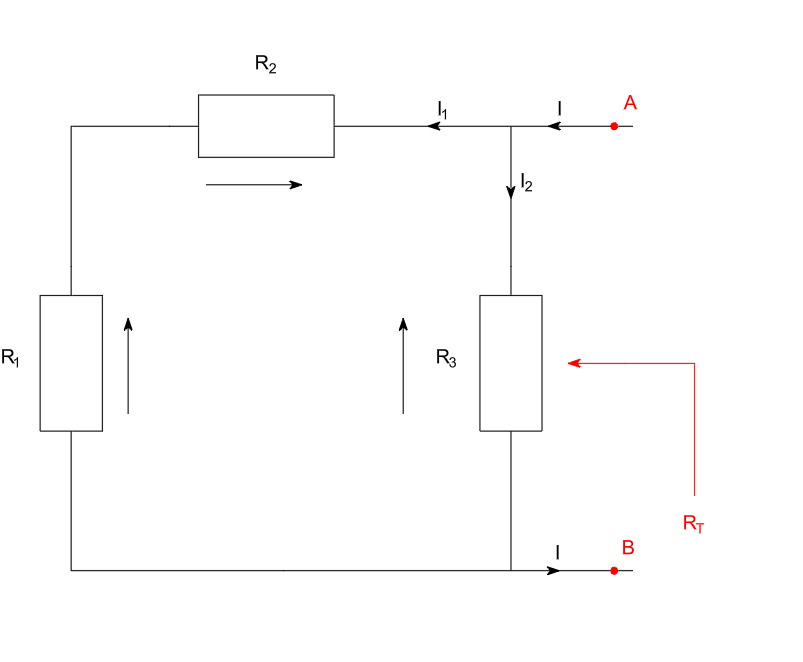
Step 4 - We connect these elements to the examined branch and calculate the current in that branch
